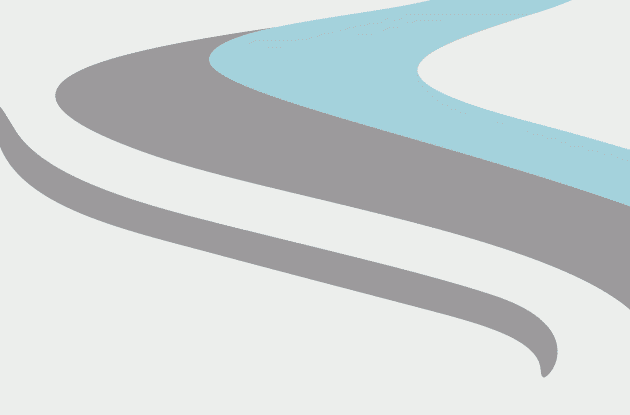Cycling Stretches and Flexibility Exercises
Improve your performance and reduce the risk of future injuries.
Road cycling is generally longer than track races and the natural lay of the land provides for hills and valleys to challenge the rider. Road races are generally much smoother than mountain biking or trail racing and therefore the equipment is much different. A road bike would not stand up to the constant pounding of a trail race, but the road bike is designed for more speed and tighter turning and balance.
Anatomy involved
Bicycle road races require a great deal of both muscular and cardiovascular endurance. A good combination of speed, strength, and endurance work, along with flexibility training, is essential for cycling success.
The major muscles involved in road cycling include:
- The muscles of the legs and hips; the quadriceps, hamstrings, and gluteus muscles, and the lower leg, anterior tibialis, gastrocnemius and soleus.
- The core muscles are important for maintaining balance and power; the rectus abdominis, obliques (internal and external), hip flexors, and the spinal erectors.
- The muscles of the arms and shoulders are important to maintain a support position on the bike when leaning forward; the deltoids, biceps and triceps, and the muscles of the hand, wrist and forearm.
A good strengthening and conditioning program for these muscles will help ensure success on the bike. Weaknesses, or imbalances, in any of these muscles can lead to injuries for all cyclists. Special attention must be paid to stretching the muscles after use to ensure flexibility in commonly over-used muscles.
Most common injuries
Road cyclists are susceptible to many overuse injuries. They are also, due to the high rates of speed, at risk of traumatic injury. This combination means that cyclists must take precaution to avoid incorrect form and excessive wear on joints and bones.
The list of common overuse injuries experienced by cyclists includes Plantar Fasciitis, Knee Bursitis, Iliotibial Band Syndrome (ITB), Patellar Tendonitis, Lower Back Pain, and Muscle Strains. Cyclists who experience crashes may obviously also be subject to fractures and traumatic brain injury.
Plantar Fasciitis: The plantar fascia is a strong ligamentous band that runs along the bottom of the foot, from the heel to the ball of the foot. This band supports the arch of the foot and is under strain when the foot is bearing weight. When the foot supinates, such as when pedaling on a bike, this places additional stress on this fascia. Plantar fasciitis is a condition that occurs when the fascia becomes inflamed and painful. Rest is the best medicine for plantar fasciitis. NSAIDs and ice massage can help, as well.
Knee Bursitis: Bursitis is a condition where the bursa, a fluid filled sac that cushions the tendons and ligaments where they cross the bone, become irritated and inflamed. This leads to redness, warmth, and swelling in the area. In some cases the bursa may rupture causing the fluid to leak out and impair the ability of the bursa to cushion. Repetitive flexion and extension of the knee can cause irritation to the bursa on the outside of the knee or on the top of the knee cap. The pain will subside with rest and the inflammation usually responds to ice and NSAIDs during rest. Flexibility training during rehabilitation helps to reduce the chance of bursitis recurring.
Iliotibial Band Syndrome (ITB): The iliotibial band is actually a thick tendon-like portion of another muscle called the tensor fasciae latae. This band passes down the outside of the thigh and inserts just below the knee. The main problem occurs when the tensor fasciae latae muscle and iliotibial band become tight. This causes the tendon to pull the knee joint out of alignment and rub against the outside of the knee, which results in inflammation and pain. Flexibility of the hips and quadriceps are important in preventing ITB syndrome.
Patellar Tendonitis: Patellar tendonitis may be an acute injury, caused by trauma to the tendon. More commonly it is due to overuse, or incorrect pedaling form. The tendon rubs over the bone and causes inflammation that aggravates the condition, leading to a cycle of inflammation and pain. A lot of mileage during training can lead to this condition. Treatment for tendonitis includes discontinuation of the activity that caused the problem, NSAIDs, and ice.
Lower Back Pain: The riding position on the bike, especially during road racing, can cause pain in the lower back due to poor posture or fatigue. The muscles in the lower back can become fatigued during a long session of cycling and extended time in the same position may lead to the muscles becoming tight. This pain usually subsides with rest and stretching. Pressure on the intervertebral discs may require medical help to relieve.
Muscle Strains: Muscle strains are sometimes caused by overstretching or working against an extreme load. They may also be caused by overtraining a muscle and not allowing for rest and recovery. The muscle fibers tear causing inflammation and bruising within the muscle. The resulting pain may lead to a guarding of the muscle and stiffness will set in due to scarring. Muscle strains range from severe, large numbers of fibers and a large area of the muscle, to minor, involving a small number of fibers. Rest, ice, and anti-inflammatory medication are used to treat muscle strains. (For more treatment details, see our R.I.C.E.R. article)
Fractures: A fracture occurs when a bone breaks. It can be a partial or complete break and may be inline or compound. When an extreme force is applied to a bone, either across the bone, or via rotational or compressive force, then the bone may break. The larger the bone, the greater the force required to fracture it. The higher speeds of cyclists today has also led to more severe fractures, and fractures to the larger humerus and femur. Fractures require immediate medical attention and must be immobilized to prevent further injury. Fractures usually require at least four to six weeks for recovery, with compound and large bone fractures requiring even more time.
Traumatic Brain Injury: Bike accidents can easily lead to a Traumatic Brain Injury (TBI). Acute damage to the brain tissue can range from a mild concussion to complete separation of the spinal cord from the base of the brain stem. Landing on the head or being struck by another cyclist after having fallen cause many of the traumatic brain injuries in cycling. When the head hits the ground or is struck the brain moves within the skull causing bruising or more severe injury. Traumatic brain injury is a medical emergency and, therefore, requires immediate medical attention.
Preventative Strategies
Proper conditioning and safety measures should be an essential part of the injury prevention strategy used by all road cyclists.
- Wearing a bicycle helmet while riding is extremely important to prevent head injuries.
- Keeping the bike in top riding condition and maintaining it on a regular schedule will also help prevent accidents from occurring.
- Learning proper cycling technique is important to prevent overuse injuries and those caused by improper form.
- Proper cardiovascular conditioning will prevent fatigue and other overuse injuries.
- Stronger muscles will be able to handle the stress of longer rides better than weaker ones.
- Increasing flexibility in the muscles and joints will reduce the stress on these areas during training.
The top 3 cycling stretches
Stretching is one of the most under-utilized techniques for improving athletic performance, preventing sports injury and properly rehabilitating sprain and strain injury. Don't make the mistake of thinking that something as simple as stretching won't be effective or important.
Stretching is essential to overall conditioning and should be an integral part of any training routine. Due to the long period of time spent in the same position on the bike, stretching is very important to cyclists, both pre- and post race or training. Stretching can be a powerful rehabilitation and recovery tool, as well.
Below are 3 of the most beneficial stretches for cycling. Obviously there are a lot more, but these are a great choice to start with. Please make special note of the instructions beside each stretch.
Kneeling Quad Stretch: Kneel on one foot and the knee of the other leg. If needed, hold on to something to keep your balance and then push your hips forward. | |
Single Heel-drop Achilles Stretch: Stand on a raised object or step and place the ball of one foot on the edge of the step. Bend your knee slightly and let your heel drop towards the ground. | |
Lying Knee Roll-over Stretch: While on your back, bend your knees and let them fall to one side. Keep your arms out to the sides and let your back and hips rotate with your knees. |
The above 3 stretches are just a small sample of stretching exercises that will help you improve your cycling game and eliminate cycling injuries.
Good luck out there on the roads.








